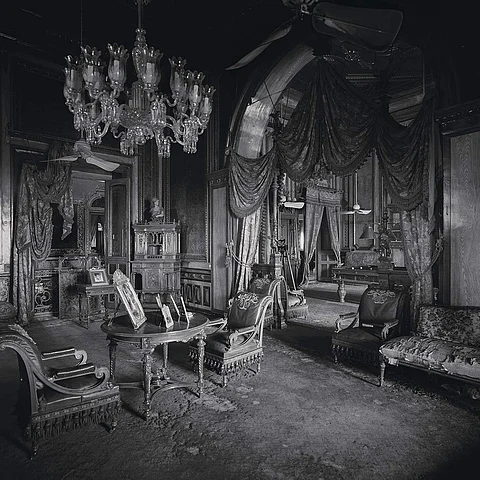Photography: Derry Moore captures "the end of dynasties"
DERRY MOORE is, in many ways, a legend himself, with as much of a historied career as many of the subjects that he has been training his focus on. Moore first visited India in 1976, and many of the pictures he clicked are testaments to a bygone era.
“My initial idea was to photograph some of the places whose days, I knew, were numbered,” says Moore, who also happens to be the 12th Earl of Drogheda (a title in the Peerage of Ireland). In particular, Moore says he was fascinated by “the hybrid quality of many of the lesser buildings that had been constructed since the first arrival of the British in India”.

In turn, Moore found himself documenting a “cultural osmosis”, in the influences of British and European architecture on Indian buildings: “A grandeur and a sense of space, such as are rarely seen in Britain, were frequently the outcome: rooms were higher, windows larger, corridors wider, detail more lavish; the porticoes of relatively humble houses might have been snatched from the front of the British Museum.”
Moore has often spoken about considering himself fortunate to have lived as a part of the generation that witnessed “the end of dynasties”. Although, it never occured to him that he’d rather have been clicking pictures in an earlier generation.

“The answer is not simple,” offers Moore. “The biggest ‘if’ is whether I could have had my present experience, and that is an unfair wish. Would I have felt the urgency of recording things, and people, that I didn’t perceive as threatened with extinction? Probably not.”
The osmotic style that he has been documenting is indeed visible across matters of art, food, and urban lifestyles, admits Moore. For the most part, this hybridisation is “a result of the speed of communication today,” he says.

While only a selection of his photographs will be on display at the gallery, a book of the same name as the show features Moore’s vast body of work.
Among his more memorable pictures are portraits of the late auteur Satyajit Ray, and a prized shot of the late revered vocalist MS Subbulakshmi, standing beside her husband, TS Sadasivam. In these pictures, Moore preserves Indian history like few others have, for the benefit of ages to follow.
Derry Moore: In the Shadow of the Raj, co-hosted by Dauble, opens at Tasveer on January 20. Until February 10. The book of the same name is available at Tasveer bookstore, `3,500.

